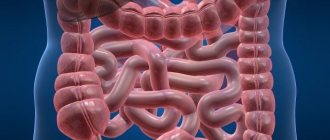A number of older people suffer from digestive disorders associated with exocrine pancreatic dysfunction. Exocrine pancreatic dysfunction can manifest itself as a combination of various symptoms; malabsorption is most often diagnosed.
Older people are characterized by the accumulation of intestinal bacteria, occurring in combination with gastric hypochlorhydria, impaired intestinal motility, or Parkinson's disease. This leads to dysfunction of the gastrointestinal tract. But in case of digestive dysfunction, it is always necessary to think about the pathology of the pancreas.
Causes of pancreatic dysfunction
The content of the article
One of the causes of pancreatic dysfunction is constant changes in the organ. Over the years, anatomical and secretory changes occur. The diagnosis of some older people who suffer from exocrine pancreatic dysfunction of unknown cause is believed to be based on a natural disorder of the organ.
According to others, the reason for refusal may be:
- stones;
- pancreas cancer;
- chronic pancreatitis;
- other diseases of the pancreas.
Not to mention the increased incidence of diabetes mellitus (CD) when the pancreas is damaged.
The most common symptoms of malabsorption in older people are:
- bloating;
- cramping abdominal pain;
- flatulence.
Some of the patients do not have obvious symptoms, but suffer from a lack of nutrients and microelements. Usually there is a lack of fat-soluble vitamins, especially vitamin D, as well as folic acid, vitamin B12, and iron.
These substances are vital, and their deficiency can cause serious problems. This significantly reduces the quality of life of older people, leads to exacerbation of other concomitant chronic diseases and shortens life expectancy.
What is diffusion?
Diffuse changes in the pancreas are detected by ultrasound.
Pathological changes in pancreatic tissue can be local (focal) or diffuse (mixed). The term diffusion is used in physics and chemistry. And considering this term from the point of view of these sciences will allow us to better understand the essence of the processes occurring in our body.
The term diffusion comes from the Latin word, and means interaction, spreading. In other words, this is the penetration of molecules or atoms of one substance between molecules or atoms of another substance.
The phenomenon of diffusion can be observed when ink is poured into water. In anatomy, diffusion means the interpenetration and replacement of some tissue cells by others. This phenomenon is often observed in the pancreas, where pathologically altered cells coexist with healthy ones. Therefore, diffuse transformations of the pancreas are usually detected by ultrasound.
Prevalence of pathology
An increase in gastrointestinal pathologies in old age has been documented for a long time. A large population-based study was conducted to determine the prevalence of exocrine pancreatic dysfunction in older adults.
It was attended by 914 people aged 50 to 75 years. General practitioners were invited to participate in the study during the medical examination. All participants and doctors had to fill out a standardized questionnaire about lifestyle, social, demographic situation, and provide medical information.
Exocrine pancreatic function was assessed by studying fecal elastase-1. The study included 524 women and 390 men, mean age 61.9 years.
- Exocrine pancreatic dysfunction was diagnosed in 105 (11.5%) of 914 people. An average of 52 mg elastase-1/g was detected in their feces. cal.
- 47 (5.1%) people were diagnosed with severe exocrine pancreatic insufficiency. An average of 100 mg elastase-1/g was found in the feces of this group.
It was also found that the exocrine function of the pancreas directly depends on age: it is worse in older people. Exocrine pancreatic dysfunction is more common in men than in women.
Constant morphological and functional changes
Persistent morphological and functional changes
Comparing young and elderly people, it was found that in some people the level of pancreatic enzymes does not decrease by much in old age, while in others it decreases statistically significantly. However, both functional and structural changes do not occur in everyone at a certain age and do not always progress.
It is believed that atherosclerotic changes in the blood vessels of the pancreas reduce its blood flow, which contributes to fibrosis of the lobes, hyperplasia of the ductal epithelium, and pancreatic atrophy.
In older adults, irregularities, dilatations, and additional branches of the main pancreatic duct are recorded using ultrasound or endoscopic retrograde cholangiopancreatography (ERCP). These changes are not necessarily associated with decreased pancreatic function.
Symptomatic malabsorption occurs when the secretion of pancreatic enzymes is reduced by 80-90%. This is the level of enzyme depletion that can be detected in older people without any underlying disease causing it. The pathology is considered a violation of the exocrine function of the pancreas of unknown origin.
Pancreatic dysfunction of unknown origin occurs in older people. The explanation for the cause of this disorder is related to:
- vascular insufficiency;
- pancreatic calcification;
- autoimmune chronic pancreatitis.
Chronic pancreatitis caused by chronic alcoholism can also cause exocrine pancreatic dysfunction. Gallstones are also more common in older people and can cause a rare complication called chronic atrophic pancreatitis.
Another common type of chronic pancreatitis is obstructive pancreatitis, caused by an ampullary tumor or cancer of the head of the pancreas. This type of pancreatitis is not characterized by pancreatic calcification or abnormal protein plugs because it usually begins acutely. The main pancreatic duct is usually dilated, which is not typical for alcoholic or idiopathic pancreatitis.
In rare cases, stones can block the pancreatic ducts, leading to chronic pancreatitis and malabsorption. Stones in the pancreatic ducts are directly associated with old age: they are found in 15% of cases in people over 90 years of age. This condition leads to chronic pancreatitis and malabsorption.
Changes in the pancreas in diabetes mellitus
Diabetes is common in older people, especially those who are type 2 or insulin dependent. It is also known that many morphological changes occur in the exocrine pancreas in diabetics.
In patients with CD, the pancreas is positioned lower than in healthy individuals, mainly due to involution of the exocrine tissue. Atrophy is especially characteristic of the body of the pancreas.
Histologically revealed:
- pancreatic fibrosis;
- fatty infiltration;
- inflammatory infiltrates inside.
As a result of these changes, a significant proportion of patients with CD experience mild to moderate impairment of bicarbonate and enzyme secretion.
Pancreatic volume measured by computed tomography has been reported to clearly show a relationship with exocrine pancreatic function. However, exocrine pancreatic dysfunction is more common in patients with type 1 diabetes (prevalence 25–80%) and is 15–73% in patients with type 2 diabetes.
Impaired secretion of amylase and bicarbonate was observed in a group of patients with diarrhea and peripheral neuropathy. The response to exogenous stimulation accounts for 40% of responses in a group of healthy individuals.
The mechanisms of the pathological physiology of the development of exocrine pancreatic insufficiency in diabetes are not clear. One of the main reasons is a violation of acinar-islet connections due to an imbalance of stimulating (insulin) and blocking hormones (glucagon, somatostatin).
Other mechanisms of exocrine insufficiency include:
- fibrosis caused by angiopathy;
- autoimmune mechanisms;
- autonomic neuropathy;
- dysregulation of gastrointestinal mediator secretion.
Although exocrine pancreatic dysfunction in patients with diabetes is usually mild or moderate, these patients often suffer from abdominal pain and diarrhea. Thus, given the possibility of exocrine pancreatic dysfunction, such patients may benefit from taking pancreatic enzymes. More detailed clinical tests are required to confirm this.
Types, characteristics of fibroids
There are more than 10 different morphological variants. Pathologists give a description of what each form looks like and how it differs after histological examination - elastrophibroma, soft, dense fibroma.
- Dermatofibroma is a single or multiple formation of intradermal localization, mobile and painless when palpated with unchanged color.
- Desmoid fibroma has another name - aggressive fibrosis, refers to mesenchymal tumors originating from excess collagen fibers and differentiated fibroblasts. They often progress and recur, forming in soft tissues, the retroperitoneum or on the abdominal wall.
- Chondriomyxomas are rare tumors that affect bone tissue - the edges of long bones, pelvis, ribs, vertebrae, feet, metatarsus.
- Angiofibriomas in the cheek and nose area, containing small tubercles with connective tissue fibers.
Symptoms and diagnosis of disorders of the exocrine function of the pancreas
The main manifestation of exocrine pancreatic dysfunction is fat malabsorption or steatorrhea (more than 6 g of fat per day is found in feces).
It is also characterized by:
- weight loss;
- bloating;
- abdominal discomfort.
Malabsorption of fats also leads to a deficiency of fat-soluble vitamins (A, D, E, K), which manifests itself in certain symptoms. Mild, moderate, and severe exocrine pancreatic insufficiency may occur.
Exocrine pancreatic dysfunction is diagnosed by evaluating symptoms and performing direct and indirect diagnostic tests. Morphological changes of the pancreas can be assessed using ultrasound, computed tomography or ERCP. The most sensitive option is the secretinocholecystokinin or secretin-cerulein test.
During stimulation of the pancreas, gastric and pancreatic juices are collected. This is an expensive, invasive test, may not be applicable everywhere, and is often not even suitable for older people. Currently, chymotrypsin and elastase-1 in feces are the most frequently studied. The elastase-1 assay is more specific than chymotrypsin.
The advantage of this study is the ability to detect even small degrees of exocrine dysfunction. The cholesteryl octanoate breath test is used very rarely due to its high cost and impact on metabolic and pulmonary diseases. The stool fat test is also useful in assessing the effectiveness of exocrine treatment.
3.Diagnostics of cystic fibrosis
A genetic test to detect the defective CFTR gene can be done before the baby is born. This may be especially important if the husband and wife have a history of cystic fibrosis in their family.
In addition, special tests are carried out immediately after the birth of the child. A blood test shows whether the pancreas is functioning normally. For older children who show symptoms, a test that measures the amount of salt in their sweat may be done. This test is not performed on newborns because they do not sweat. An immunoreactive test is used for infants
, allowing the detection of
trypsinogen protein in the blood
. If the answer is positive, genetic testing or a sweat salt test may be done later.
Other methods of diagnosing cystic fibrosis include a chest x-ray
and lung tests, which can identify common problems that occur with cystic fibrosis.
About our clinic Chistye Prudy metro station Medintercom page!
Nutrition for equatorial pancreatic insufficiency
Reducing fat intake is thought to help relieve steatorrhea: the daily intake of about 100 g should be reduced by about 25%.
Adequate energy value of food is provided by the consumption of medium-chain fatty acids. These are triglycerides with a length of 8 and 10 carbon atoms. They are easily digestible and dissolve vitamins. However, these triglycerides do not contain essential fatty acids. In addition, both water-soluble and fat-soluble vitamins and minerals (especially zinc and selenium) should be used.
Dietary habits can regulate the secretion of pancreatic enzymes. Foods high in fat and protein promote the secretion of proteolytic enzymes. Eating foods low in fat and protein reduces enzyme production. This affects amylase to the least extent.
These observations may be a reason to eat more fatty foods. However, we should not forget that the pancreas has a certain limit for the production of enzymes; they can be depleted, which requires accurate diagnosis and an individual diet plan for each patient.
If malabsorption is high, carbohydrate absorption is also impaired. Abdominal bloating is characteristic. In this case, foods high in fiber are not suitable because fiber interacts with enzymes, primarily those that break down fat. After individual selection of the diet, oral enzymes are also recommended; they facilitate digestion and ensure the necessary absorption of substances.
Prevention
To prevent DI, you need to completely abstain from alcohol.
How quickly DI will develop in the pancreas, and possibly also in the liver and other organs, depends on the patient. The process of dying of parenchymal cells can be slowed down if you follow simple rules:
- Completely abstain from alcohol;
- Develop a proper diet, eat often and in small portions;
- Minimize the consumption of fatty foods;
- Drink herbal teas and fruit juices prepared with your own hands;
- Avoid canned foods in any form.
DIPJ is not a death sentence. There is no reason to panic. Typically, such distortions indicate normal processes occurring in the body. But if DI is detected against the background of pain, then it is necessary to undergo further examination and be more attentive to yourself and your body.
Treatment of pancreatic dysfunction
Treatment of pancreatic dysfunction
Insufficient exocrine function of the pancreas causes unpleasant symptoms, impairs the absorption of substances and the general condition of the body, which leads to a deterioration in the quality of life and survival of older people.
Changing dietary habits is usually difficult, so pancreatic enzyme replacement therapy is preferred. It is important to understand that diabetes mellitus is associated with both morphological and functional changes in the exocrine pancreas.
The disease with severe steatorrhea occurs in a few. Generally, mild to moderate dysfunction causes various gastrointestinal disorders that impair quality of life. These patients will benefit from pancreatic enzymes, but blood glucose levels should be monitored.
Pancreatic enzyme replacement therapy must provide sufficient amounts of the missing enzymes and be administered at the appropriate time. It is estimated that 25,000 to 50,000 units of lipase and 10,000 units of trypsin per meal should be consumed to prevent steatorrhea and azotrorrhea.
Enzyme replacement therapy is achieved with pancreatin preparations. Pancreatin can be administered as:
- powders;
- tablets;
- capsules.
The most sensitive enzyme is lipase. If it is not protected from gastric juice, it is quickly destroyed. The mini-tablets in the capsule are evenly coated with an acid-resistant coating that protects exogenous enzymes from the effects of stomach acids. Once the capsules enter the duodenum (pH 5.5-6.0), this coating is destroyed and the enzymes are released into the intestinal lumen.
Drugs in capsules are superior to other forms. Due to the physical and chemical properties of the coating, mini-tablets do not disintegrate in the stomach for more than two hours and are uniformly released within half an hour after ingestion. This ensures the physiological process of digestion.
Disease severity
In determining the severity of cystic fibrosis, signs of damage to the respiratory system play a major role.
Depending on their severity, the following degrees of severity of the pathology are distinguished:
- I - cystic fibrosis is characterized by minor changes of a non-permanent nature, cough and shortness of breath appear only during physical exertion;
- II - manifested by a chronic inflammatory process in the bronchi, constant moderate shortness of breath and deformation of the phalanges of the fingers. On auscultation, moist rales are heard;
- III - manifested by progressive damage to the bronchi and lungs, with the development of foci of fibrosis and sclerosis, the appearance of bronchiectasis, and the appearance of signs of cardiac and respiratory failure;
- IV - accompanied by severe heart and lung failure.
Assessing the symptoms, the doctor adjusts the dosage of drugs, thereby ensuring complete treatment of cystic fibrosis.










